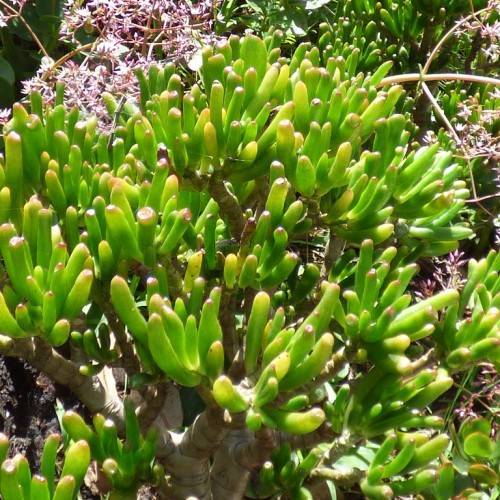
jade plant
Crassula ovata
Cycle:
Perennial
Watering:
Minimum
Hardiness Zone:
11 - 12
Flowers:
Flowers In Winter
Sun:
full sun
Soil:
Well-drained
Fruits:
Fruits In Spring Ready In Summer
Leaf:
Yes
Growth Rate:
Low
Maintenance:
Low
Indoors:
Yes
Care Level:
Moderate
watering
Since they are drought-tolerant, jade plants do not need regular watering, and overwatering may cause root rot. Watering should be done when the soil is entirely dry, which might be every two to four weeks depending on the environment and other circumstances. It is critical to provide enough water to thoroughly wet the soil without allowing it to get waterlogged. Because jade plants are sensitive to mineral buildup and hard water, watering them with distilled or rainwater or letting tap water soak for 24 hours is preferable. Watering should be done once a month in the winter when the plant is dormant and once a week or more in the summer when it is actively growing.
sunlight
Crassula ovata thrives in bright, indirect light, but direct sunlight may burn its leaves. Jade plants need at least 4 hours of bright, indirect light daily to be healthy and not get leggy. Rotate jade plants to maintain a balanced light exposure. Keep growing lights at a safe distance from plants. Jade plants need light from 12–18 inches away to avoid straining. It may benefit from more direct sunlight outdoors in the summer. To prevent sunburn, kids should gradually adjust to the brighter light. Due to fewer winter days, jade plants may need more light to flourish and prevent straining.
pruning
When the plant is actively developing, prune it in the spring or summer. Before using the scissors or pruning shears, ensure they are clean, sharp, and sterilized. To encourage fuller, bushier growth, prune away any diseased, broken, or withered branches and pinch off the very ends of the stems. Trash back lanky growth to a point immediately above a node to get a larger, more compact plant. If the plant has outgrown its container, repot it, prune the roots if needed, and ensure it has enough water.
maintenance
Propagation
Season
Hardiness Map
FAQ
Do jade plants need frequent repotting?
No, jade plants do not need frequent repotting. In fact, a jade plant will generally do fine with several years between repotting. However, if the plant has been outgrowing its pot, or it has become rootbound, then it should be repotted as soon as possible. When repotting a jade plant, use a pot that is only slightly larger than the previous one, and make sure a well-draining soil is used.
Is the jade plant considered a succulent?
Yes, the jade plant is considered a succulent. Succulents are plants that store water in their leaves, stems, or roots, and the jade plant fits this definition. It is a woody-stemmed, evergreen succulent shrub with plump, thick leaves. Its beautiful foliage and ease of care have made it a popular choice for both indoors and outdoors.
Is the jade plant a popular houseplant?
Yes, the jade plant is a very popular houseplant. Often referred to as the "Money Plant" or "Money Tree," this succulent is favored for its low-maintenance care needs and attractive waxy green leaves. The jade plant is well-suited for growing in sunny or well-lit areas, such as windowsills, and does not require much watering in order to thrive. Its leaves are said to bring good luck, which has led to its frequent use as a housewarming gift.
Do jade plants flower?
Jade plants, also known as Crassula ovata, are succulents that can be grown indoors. While the plant does produce white, pink, or pale yellow star-shaped flowers, this occurs relatively rarely. Flowering depends on the environment the plant is kept in, with blooms occurring more frequently in summer months and in warmer climates. Blooms are fewer and further between in colder climates, and can almost never be expected if the plant is kept indoors.
Is the jade plant a slow-growing plant?
Yes, the jade plant is a slow-growing plant. It typically grows 6-12 inches per year and can also go dormant in colder temperatures, causing its growth rate to slow even further. It usually takes a jade plant two to three years to reach a mature height of two to three feet. It is important to remember, however, that its growth rate can be affected by many things, such as the amount of sun it receives and the type of pot it is in.
